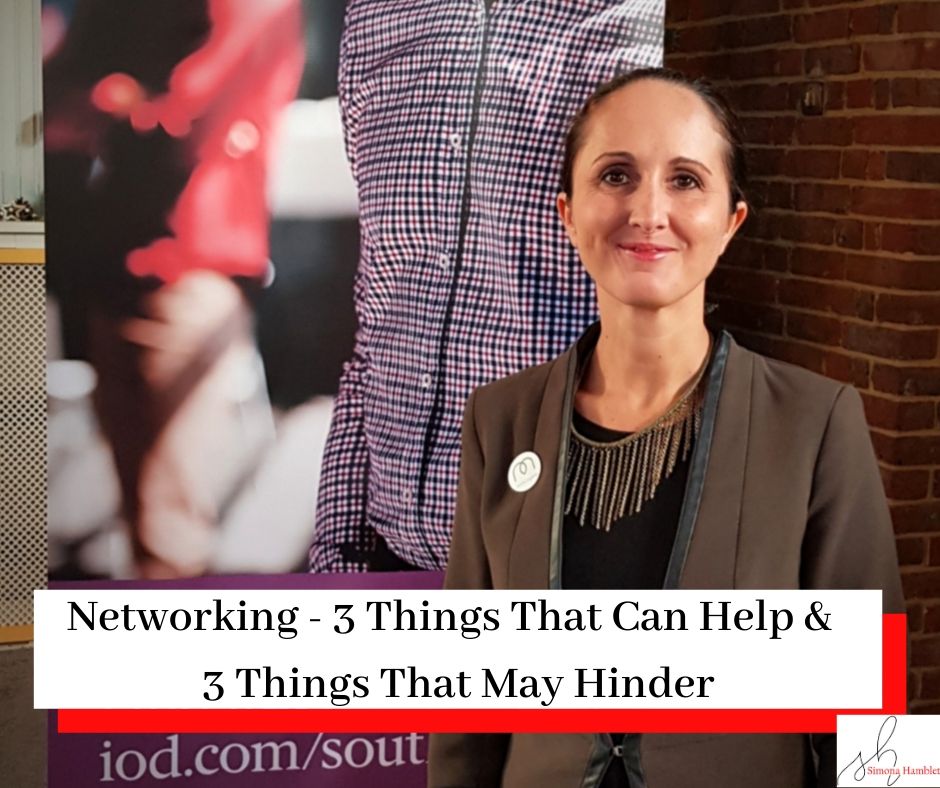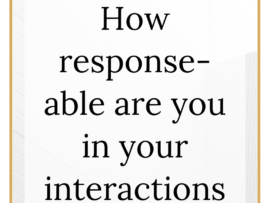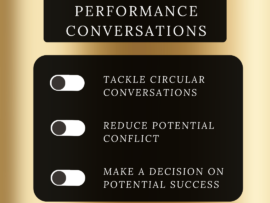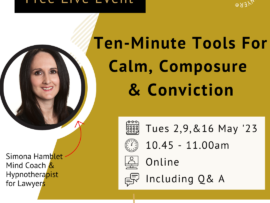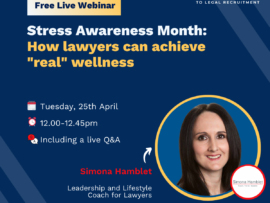Networking – What Helps or Hinders?
0 CommentsNetworking :
3 Things That Can Help & 3 Things That May Hinder
(If you prefer video content you can find the YouTube video for this here.)
The topic of networking frequently comes up. We might assume others enjoy it, find it easy, are full of confidence.
The reality is that, even for those that are confident in networking, it isn’t always easy. For others, it is something they find uncomfortable or nerve wracking.
I have been actively networking since I started work over 20 years ago, and occasionally it can still feel like hard work.
Since this topic often comes up. Here are six tips for you.
3 Tips To Help
We all want to make networking a little bit easier. Here are three ways to help you on your way:
1. Pick your events to match your preferences and your chosen outcomes.
I rarely attend networking events where you stay standing and circulate for the duration. I now typically choose networking events which start with a bit of ‘standing’ networking, before we move to sit at tables. It might include a presentation, but either way, it includes some group discussion. This format means that I can better get to know others on the table, that is, building relationships.
If I have lower energy days, I might arrive at those events closer to the ‘sit-down time. This gives me an opportunity to catch up with people I know, before I can then focus on new people at the tables.
On higher energy days, I can go earlier, and network more widely, before we sit. Whilst I do attend other networking events. They typically have a key speaker or venue that is of interest. Choose events that you enjoy and work for you.
Try to also mix your events. We can typically choose events where we are similar (in size or approach, for instance). This is great for support. However, it won’t necessarily encourage us to think differently, or push ourselves (or our businesses) to the next level. Choose a variety to keep it interesting, keep you learning, and keep your business growing.
2. Create space for others.
Make it easy for people to join you and leave you, by thinking about the space you are creating.
If you have approached someone on their own (which is always appreciated), or someone comes up to you, and you are now in a pair. Open up your body language (as if creating a triangle with a gap), so that a third person can easily join you. This will also be welcomed by others. It also means that if there are three of you, and one person leaves, you aren’t left standing alone. Once more trying to find the new group to break into (or feeling bad that you left someone else on their own).
Likewise, when in groups, create space and be welcoming to others, when you notice them hovering on the periphery. You will be remembered for that kindness.
3. Ask questions.
The easiest way to build a relationship, and avoid much awkwardness, is to ask questions. Two people with the same job title, can do very different things. I find it fascinating to find out what they actually do, day in and day out. Ask away. If you are genuinely interested, people love to talk about themselves, and you can quickly have a more relaxed conversation.
Networking is about building relationships over time. Getting to know people and then keeping in touch. Which might mean on social media, in person, or by attending events with some regularity. You want to stay in the forefront of each other’s minds, should an opportunity for work, joint project, or a referral, arise.
3 Things That May Hinder
Three things can get in the way, of creating those relationships you wanted.
1. Body language.
Slouching, arms behind your head, crossed over, leaning against a wall with your foot up, turning away. What impression do you want to give? Tweak it if you notice yourself doing it. Likewise, use available eye contact, and ensure you can be heard. If you are very quiet, particularly against a background noise, people will struggle to connect, and move on. You may need to learn to project a little more (particularly if nervous).
2. Handshakes.
Limp handshakes occur far too often. Physical ability permitting, this means one of two things. Either they know and don’t care. Or they don’t know. I would guess it is the latter. Find someone, or a few people, and ask them. You might feel silly, however, a negative first impression doesn’t lead the way to positive networking relationships.
3. Explaining what you do (and who for). Effectively.
Whilst it may not always be possible to be succinct, and I am not suggesting you necessarily create an elevator pitch. If someone asks you a couple of times, and they still look confused, or you regularly find people are nodding politely and then moving the subject on, your explanation may need tweaking. Be aware.
Conclusion
With a focus on the above three tips, and a tweak, if needed, of a few behaviours and skills. You can hopefully feel more confident, and dare I say it, even possibly enjoy some moments of networking.
I hope you found this useful, if so please share it, and if you have any questions, please do let me know.
Simona
